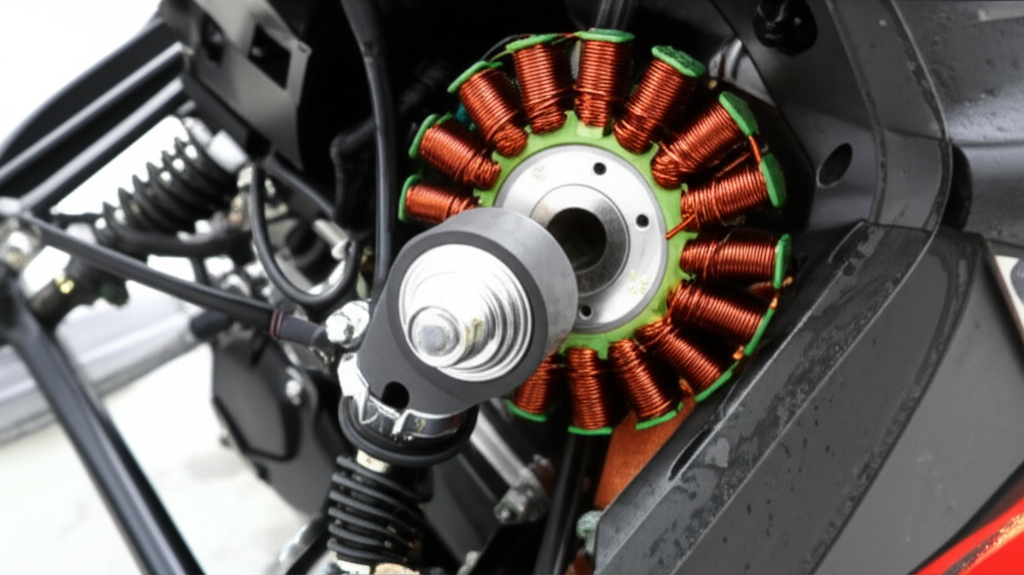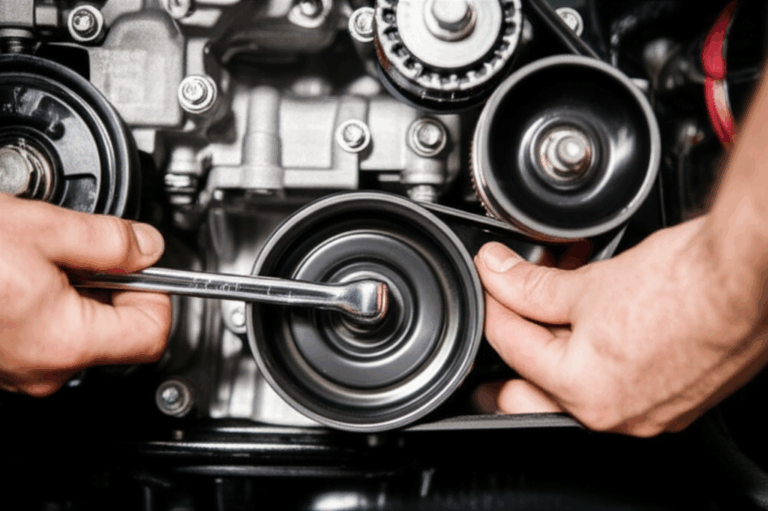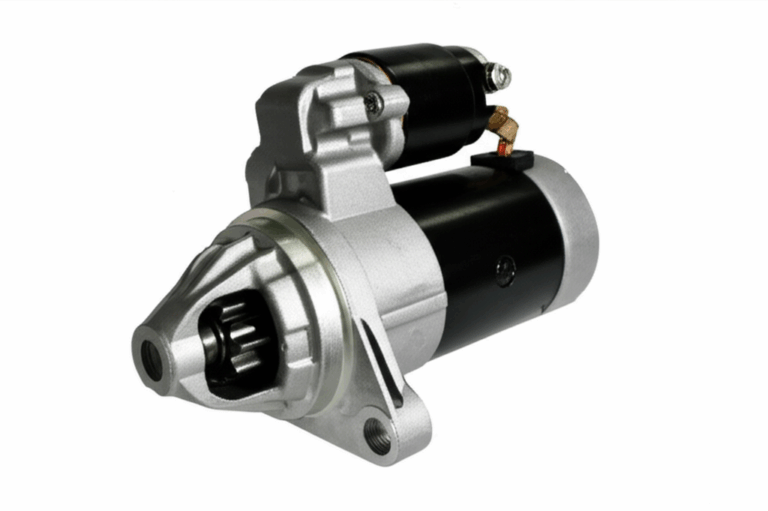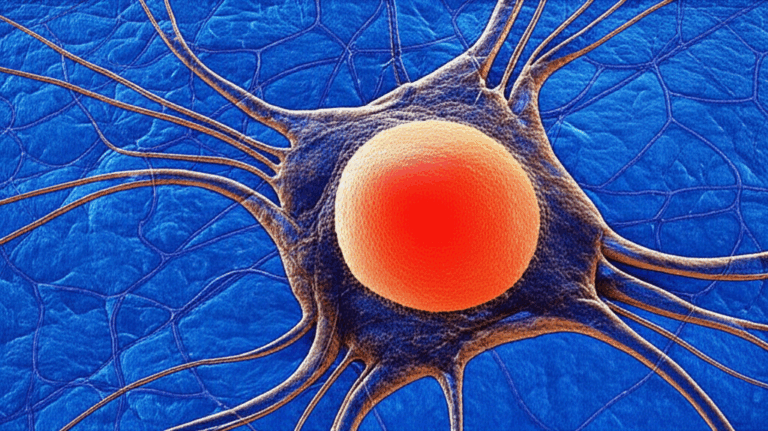
What Does a Stator Do on a Snowmobile? My Hands-On Guide to Power, Performance, and Troubleshooting
Table of contents
- Introduction: The short answer and why it matters
- What a stator is and how it works
- The magneto system in plain English
- AC to DC: rectifier/regulator explained
- Single-phase vs three-phase stators
- What the stator powers on your sled
- Charging the battery
- Running lights, gauges, and accessories
- Feeding the ignition system on some models
- Symptoms of a failing stator
- How I diagnose a stator problem step by step
- Start with the basics
- Multimeter tests that save time and money
- Ruling out the rectifier/regulator
- Chasing voltage drop and parasitic draw
- Why stators fail in the real world
- Replacement and repair
- Tools, time, and costs you should expect
- OEM vs aftermarket vs high-output upgrades
- Installation pitfalls I see all the time
- Preventative maintenance that actually works
- Brand notes: Polaris, Ski-Doo, Arctic Cat, Yamaha
- Quick scenarios and decision trees
- FAQs on snowmobile stators
- Wrap-up: Keep your sled powered and ready
Introduction: The short answer and why it matters
I get asked this all the time on the trail and in the shop. What does a stator do on a snowmobile? Short answer. The stator generates the electricity your sled needs to run. It powers the ignition on many models. It charges the battery. It keeps your lights bright and your accessories alive. Without it you do not go far.
That sounds dramatic. It is not. The stator sits at the core of the snowmobile electrical system. When it works you do not notice it. When it fails you feel it fast. Dead battery. Dim lights. No spark. EFI fuel pump quiet. A ride day cut short.
In this guide I will walk you through how a stator works and how I test one. I will share what I have learned from real diagnostics on Polaris, Ski-Doo, Arctic Cat, and Yamaha sleds. I will show you the symptoms that point to a stator versus a bad rectifier/regulator or a weak battery. My goal is simple. Help you understand the system and solve the problem without guesswork.
What a stator is and how it works
I like to picture the stator as a ring of copper coils that never moves. It is bolted to the engine case. Around it spins a flywheel that carries strong permanent magnets. That spinning magnetic field is the magic. It sweeps past the copper windings and induces an electrical current. That is basic electromagnetic induction.
The magneto system in plain English
- Stator: The stationary coil assembly. Think copper windings wrapped on a laminated steel core.
- Flywheel/rotor: The spinning part with permanent magnets bonded inside. It is bolted to the crankshaft.
- Together they form a magneto. The rotor spins. The magnetic field changes. The stator windings produce Alternating Current (AC).
Even if you never wrench on your own sled it helps to know that both stator and rotor are built on stacked metal laminations. Those thin sheets of electrical steel cut down eddy current losses and heat. If you want to see what I mean take a look at how electrical steel laminations are designed to reduce losses. That same idea lives inside your snowmobile magneto.
The flywheel itself functions as the rotor. Under the hood that rotor uses laminated cores too. If you have ever wondered why OEM rotors hold up better under heat and vibration this is part of the story. The quality of the rotor core lamination and the way the magnets are bonded matter.
AC to DC: rectifier/regulator explained
The stator produces AC. Your battery and many accessories need Direct Current (DC). The rectifier/regulator (often called the R/R or regulator/rectifier) converts that AC into DC. It also regulates voltage so you do not fry bulbs or overcharge the battery. If lights dim at idle then flare bright at high RPM the R/R and the stator are both suspects. One makes power. One shapes it.
Single-phase vs three-phase stators
Some snowmobiles use a single-phase stator. Others use three-phase for higher output and smoother charging. Three-phase stators have three sets of windings offset in the core. They produce three AC waveforms. The R/R converts that into stable DC with better efficiency. I see three-phase especially on EFI machines with fuel pumps and more electrical load.
What the stator powers on your sled
Charging the battery
A good stator and a healthy regulator keep the battery around 13.5 to 14.5 volts DC while the engine runs. That keeps starting reliable. It also stabilizes power for EFI and gauges. If you run short trips in cold weather a smart trickle charger at home makes a difference. It picks up where your charging system cannot. That reduces stress on the stator and the R/R.
Running lights, gauges, and accessories
- Headlights and taillights. Dim lights tell a story. At idle they might fade. Rev the engine and they brighten. That points to charging system output.
- Gauge cluster. No speedo or tach on some models suggests a charging issue or a harness problem.
- Heated grips and thumb warmers. Big draw on cold days. They push a weak stator or regulator over the edge. You will feel voltage drop across the board.
- Accessory power. GPS. Phone chargers. Add-ons increase electrical load. High output stators exist for a reason.
Feeding the ignition system on some models
Some sleds use a dedicated ignition coil or lighting/charging coil in the stator to power the CDI. Others rely more on battery and DC power to feed ignition coils under the ECU. On older two-stroke carburetor models the magneto can handle spark on its own. On modern EFI four-stroke machines the lines blur. The point remains the same. A weak stator can cause misfires, intermittent spark, or a no-spark condition.
Symptoms of a failing stator
Over the years I see the same patterns. Here is the short list I run through.
- Dead battery or battery not charging. You ride. You park. It will not crank later. You charge it. It dies again. That can be a stator, a bad R/R, or a battery that is done.
- Dim or flickering lights. Worse at idle. Worse when heated grips run. Classic charging system stress.
- No spark or intermittent spark. The engine spins. It will not fire. Or it fires then dies. Cleaning grounds helps. If spark comes and goes with RPM the stator is on the list.
- Engine runs rough. Misfires. Loss of power. EFI might throw a code or go into limp mode if voltage drops too far.
- Overheating stator. Burnt smell under the flywheel cover. Discolored windings. Melted insulation. That is an autopsy sign more than a diagnostic one.
- Warning lights. Battery icon or check engine light may pop. Not all sleds flag charging faults clearly.
- Snowmobile starts then dies. It fires on the battery. As soon as the battery voltage sags the weak stator cannot carry the load. The ECU shuts down.
How I diagnose a stator problem step by step
Start with the basics
I have learned not to point at the stator first. Many times the rectifier/regulator fails before the stator does. Batteries die in the cold. Connectors corrode. Grounds loosen. Start here.
- Battery. Check resting voltage after the sled sits overnight. A healthy battery reads near 12.6 volts. Anything under 12.2 is low.
- Terminals. Clean and tight. No green fuzz. No loose clamps.
- Grounds. Frame to engine ground strap in place and secure. Bad grounds create spooky problems.
- Fuses and relays. A blown fuse can mimic bigger issues.
- Kill switch and ignition switch. A sticky kill switch will send you in circles.
Multimeter tests that save time and money
I rely on three core tests. DC charging voltage. AC stator output. Coil resistance.
1) DC charging voltage at the battery
- Start the engine. Put the meter on DC volts. Measure across the battery posts.
- At idle you might see 13.2 to 13.8 volts. Rev to mid RPM. You should see 13.5 to 14.5 volts on most systems.
- If voltage stays near 12.3 to 12.7 no matter what you do the battery is not getting charge. That points to the stator or the R/R or both.
2) AC stator output test
- Unplug the stator connector that feeds the R/R. Use the meter on AC volts.
- Single-phase stator: Test between the two stator leads. Look for rising AC voltage with RPM. Numbers vary by model. You might see 20 to 60 VAC at a decent rev.
- Three-phase stator: Test between each pair of the three leads. All three readings should be similar. Imbalance points to a bad phase.
- If AC output is low across the board the stator is weak. If AC looks healthy but the battery never charges the R/R is suspect.
3) Stator coil resistance and ground test
- With the engine off and the stator unplugged check resistance between stator leads. Compare to your service manual spec. It might be fractions of an ohm. It might be a few ohms. The key is match to spec and match phase to phase.
- Check for continuity from any stator lead to ground. You should see open circuit. Any continuity to ground means a shorted winding.
- This is where many people skip the manual and guess. Do not. Specs vary between Polaris, Ski-Doo, Arctic Cat, and Yamaha. Grab the wiring diagram in your service manual. It saves you parts and grief.
Ruling out the rectifier/regulator
If stator AC output looks good and resistance checks pass then I turn to the regulator/rectifier.
- Visual inspection. Heat-damaged potting. Burn marks. Cracked connectors. Corrosion.
- Diode test on some R/R units. Many meters have a diode test function. You can check the rectifier bridge one leg at a time. Service manuals show pinouts.
- Swap with a known good R/R if you can. Many riders carry spares because they fail more often than stators. I do on big trips.
Chasing voltage drop and parasitic draw
Sometimes the stator tests fine. The system still acts weird. Now I hunt for wiring harness problems and poor connections.
- Voltage drop. Load the circuit and measure voltage between battery positive and the component positive. Then battery negative to component ground. More than a few tenths of a volt drop on either side points to a bad connection or a weak ground.
- Parasitic draw. Shut everything off. Put a meter in series at the battery. Modern sleds might have a tiny draw for memory. Anything significant will drain the battery overnight. Track it down circuit by circuit with the fuse box. Parasitic draw is not the stator. It can be the reason you think your stator is bad.
Two quick stories to show you the picture
- A Polaris came in with a dead battery after every ride. AC stator output looked great. DC at the battery never climbed above 12.6. New R/R fixed it. The stator took the blame at first. It was innocent.
- A Ski-Doo Rotax had intermittent spark. We ohm-checked the stator coils cold. Everything matched spec. We heated the area with a heat gun to simulate a long pull. Resistance went wild. The stator failed only when hot. Heat exposes borderline windings.
Why stators fail in the real world
- Overheating. This is number one. Windings cook. Insulation breaks down. Short circuits form inside the coil. Excess heat comes from high electrical load and from engine heat. Poor airflow around the R/R can push the system hard too.
- Vibration damage. Snowmobile engines shake. Over time that loosens windings and chafes wires. I see broken solder joints at lead exits and cracked insulation near zip ties.
- Corrosion and moisture intrusion. Water and salt find a way. Corroded connectors raise resistance. Heat rises. Windings suffer. A creek crossing and a missing grommet can be all it takes.
- Physical damage. Rare but real. Foreign debris can slip inside the flywheel cover. A loose flywheel key can allow contact. That chews up magnets and coils.
- Electrical overload. Pile on heated gear, extra lights, and accessories. The charging system runs hot all day. A high-output stator helps. Better is to balance the load and upgrade the R/R if the OEM one runs hot.
- Weak battery. A dead or shorted cell makes the regulator work overtime. That stress can take out the R/R. The system then hammers the stator with abnormal conditions. Care for the battery and you protect the stator.
One more detail that hides in plain sight. The stator core is a stack of thin steel laminations. That material choice controls losses and heat. Quality cores run cooler. Cheap ones run hot and fail early. If you have never seen how a stator core is built you can browse how a stator core lamination is stacked and insulated to keep eddy currents low. Those lessons from motor design carry straight over to powersports.
Replacement and repair
Tools, time, and costs you should expect
I will level with you. Stator replacement is not always a beginner job. You can do it with patience and the right tools. Here is what it often takes.
- Remove body panels and sometimes the exhaust for access.
- Drain coolant or oil depending on the design.
- Pull the flywheel. You need a proper flywheel puller for your model. Do not hammer it. You will regret it.
- Remove the stator from the engine case. Track grommets and routing.
- Clean gasket surfaces. Replace seals and gaskets on the way back in.
- Torque the flywheel to spec. Use threadlocker if the manual calls for it. Align timing marks.
Time varies by model. Two to four hours is common in a shop. Some sleds take more time. Labor rates vary. Parts range from $150 to $500+ depending on OEM vs aftermarket and output. Expect $300 to $900+ total if a shop does the work. Diagnostic time is worth it. I would rather pay one hour to test than throw parts at a guess.
OEM vs aftermarket vs high-output upgrades
I use OEM if the sled is stock and the OEM part has a good reputation. Aftermarket can be fine. Quality varies. If you add heated grips, lights, and accessories you might need a high-output stator. Make sure the regulator can handle the extra wattage. Look for solid construction. Good windings. Clean potting. A robust harness.
Inside the part the lamination stack and copper fill make a difference. The same manufacturing principles in motors matter here. If you want a deeper dive into how those cores impact performance you can scan how motor core laminations are designed to balance efficiency and heat. Better cores run cooler so the epoxy and insulation last longer.
Installation pitfalls I see all the time
- Pinched wires at the grommet. That short shows up as soon as you start the engine.
- Wrong connector pinout. Some aftermarket units use different color codes. Match wires by function not just color.
- Weak or dirty grounds. Clean the case. Use star washers. Tighten properly.
- Reusing a cooked R/R. The old regulator can kill your new stator. Replace both if the regulator shows heat damage or diode failure.
- Flywheel torque missed. A loose flywheel ruins shafts and keys. Follow the manual.
Preventative maintenance that actually works
You can extend the life of the stator and the whole charging system with a few habits.
- Keep engine cooling in top shape. Overheating the engine cooks the stator. Fresh coolant. Clean heat exchangers. Free air around the regulator.
- Inspect wiring harnesses every season. Look for chafing. Zip ties that cut in. Connectors that got loose or corroded. Use dielectric grease on critical plugs. Do not slather the contacts. Seal the edges.
- Treat the battery well. Cold kills weak batteries fast. Use a smart trickle charger when the sled sits. Check for parasitic draw if the battery drains while parked.
- Manage electrical load. Upgrade headlights to efficient LEDs if possible. Heated grips are great. Do not run every accessory at once at idle. Watch for voltage drop when you flip things on.
- Winterizing. Charge the battery fully. Disconnect or use a maintainer. Fog exposed connectors with a light protective spray. Store the sled dry to prevent moisture intrusion.
Brand notes: Polaris, Ski-Doo, Arctic Cat, Yamaha
I never judge a brand by one failed part. Every maker has strong years and weak years. Still a few patterns help when you troubleshoot.
- Polaris. Many models make stator testing straightforward. I often see the rectifier/regulator go first. Polaris forums are gold for model-specific resistance specs and stator pinouts.
- Ski-Doo (Rotax). Watch for EFI sleds that get fussy with low voltage. Some Rotax engines show heat-related stator failures after long runs. AC output tests tell the truth.
- Arctic Cat. Harness rub points cause voltage drop and intermittent charging. Inspect under the tank and along the frame near sharp edges.
- Yamaha. Strong charging systems overall. Regulators do fail like any part. Check grounds and connectors first.
Quick scenarios and decision trees
Snowmobile no spark
- Check kill switch and tether. Try a spare plug. Confirm spark visually.
- Measure AC output from the ignition coil leads on the stator if your model uses a magneto-based ignition. Resistance test the pulser/pickup coil.
- If stator ignition coils test bad replace the stator. If AC output is fine test the CDI or ECU and ignition coil.
Battery not charging while riding
- DC at battery stays under 13 volts at mid RPM. Unplug stator and test AC. If AC is low the stator is weak. If AC is strong the regulator is bad or the harness has a drop.
- Check for corroded connectors between the stator and the R/R and between the R/R and the battery.
Lights dim and heated grips weak
- Measure charging voltage with and without loads. If voltage collapses with loads the charging system is undersized or failing.
- Inspect the regulator heat sink. Move it to a cooler airflow path if the manual allows. Fresh thermal paste helps some models.
Starts then dies
- Battery gives you the first spark. As soon as voltage sags the system quits. Check DC charging voltage at idle. If it never rises above 12.6 the charging system is not working. Confirm AC stator output. Confirm regulator function.
Runs rough at high RPM
- Suspect voltage regulation and heat. Test AC stator output at high RPM. Watch for imbalance on three-phase stators. Check the fuel pump voltage if EFI stumbles at higher loads.
FAQs on snowmobile stators
What powers snowmobile lights?
The stator generates AC. The rectifier/regulator converts that to DC. The DC bus powers the headlights, taillights, and dash on most sleds. Some older systems can run lights directly from AC at certain RPM. The exact path depends on the wiring diagram for your model.
How long do snowmobile stators last?
I see 5 to 10+ years on average. Many go longer if cooled well and not overloaded. Hard use, heat, and corrosion shorten life. A well cared for sled can keep the original stator for the life of the machine.
Symptoms of a bad snowmobile stator?
Dead battery. Dim lights. No spark or intermittent spark. Misfires. Stalling. Battery or check engine icon lit. Burnt smell from the flywheel area. Low AC output on a meter confirms it.
Is it always the stator when the battery does not charge?
No. The rectifier/regulator fails often. Batteries die. Harnesses corrode. Test AC stator output first. Then test DC at the battery. Then test the regulator.
How do I check a snowmobile stator with a multimeter?
- Resistance test the coils against the service manual spec.
- Check for open circuits and for short to ground.
- Measure AC output at the stator connector with the engine running. Watch it climb with RPM. On three-phase stators compare all three pairs. They should match.
Can I ride with a bad stator?
You can limp for a short time on battery alone if the ignition does not need stator power. You might get a mile or two. EFI will die when voltage drops. I do not recommend it.
Should I choose OEM or aftermarket?
I use OEM if the price is fair and the model has no design flaw. Aftermarket can save money and can work well. Look for high quality windings, solid potting, and strong harness strain relief. If you add electrical load a high output stator and a robust regulator help.
What about the core and materials inside the stator?
The core is a stack of thin insulated steel sheets. That stack controls heat and efficiency. Better lamination quality reduces losses. If you want a quick primer on the materials we use in these cores you can skim this overview of electrical steel laminations. It is the same physics we use in motors and transformers.
Does a three-phase stator charge better than a single-phase?
In most cases yes. Three-phase produces smoother DC after rectification. It handles higher loads with less ripple. Many modern EFI sleds use three-phase units for that reason.
Can accessories burn out a stator?
Not directly. Accessories increase load. Load increases heat. Heat shortens life. If you balance your loads and keep the regulator cool your stator will live longer.
Wrap-up: Keep your sled powered and ready
I think of the stator as the heart of the snowmobile electrical system. It pumps out AC power every time you crack the throttle. The rectifier/regulator turns that into smooth DC for the battery and everything else that needs it. When the stator works you forget it is there. When it fails you feel it in your gut.
If you are staring at a dead battery or dim lights do not guess. Grab a multimeter. Measure DC charging voltage. Measure AC stator output. Check resistance against the service manual. Rule out the rectifier/regulator. That simple flow saves you money and time.
I will leave you with a materials tip because it matters long term. Stators and rotors are built on stacks of laminations. That design keeps heat down and efficiency up. Quality lamination stacks are a big deal in every electric machine from motors to magnetos. If you are curious look at how a stator core lamination is constructed and how rotor core lamination complements it in the assembly. The same design choices show up in high quality motor core laminations too. Good cores do not fix every problem. They do tilt the odds in your favor.
Take care of the basics. Keep the battery healthy. Keep connectors clean. Keep the regulator cool. Your sled will thank you with bright lights, crisp starts, and long days in the snow.








